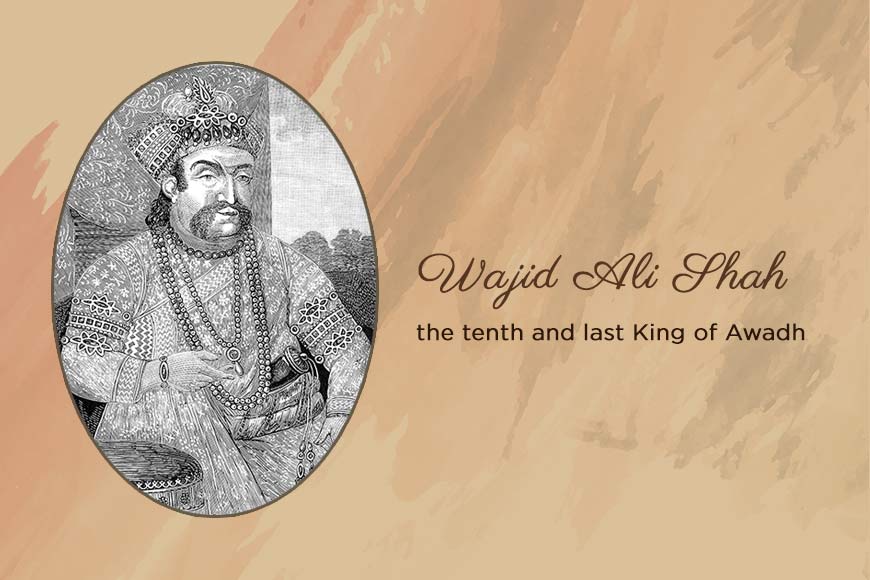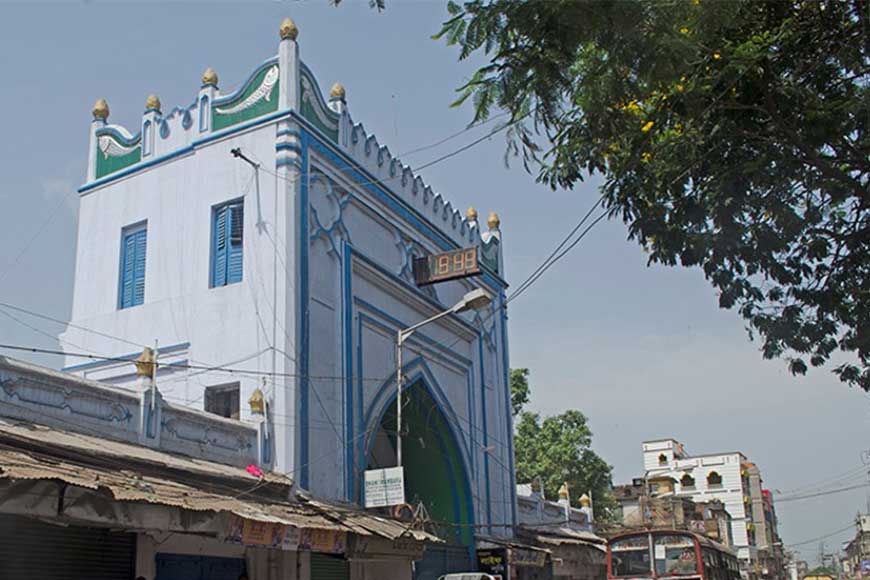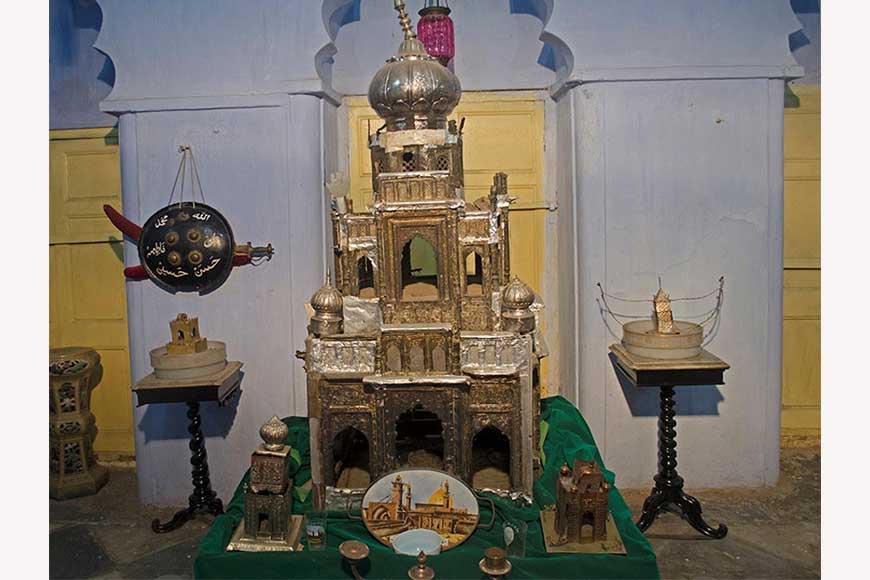The Lucknow that Wajid Ali Shah built, in Kolkata

Sibtainbad Imambara. Not a very familiar name even in its native Kolkata, leave alone the rest of India, which is unusual for one of the few surviving remnants of an unforgettable chapter in the city’s history. An edifice which was created in the likeness of Lucknow’s renowned Bada Imambara (of Bhul Bhulaiya fame), and which stood at the heart of the ‘little Lucknow’ which grew up in Kolkata’s Metiabruz, thanks almost entirely to the efforts of one man, Nawab Wajid Ali Shah.
Much like Sibtainbad, little Lucknow, too, has been largely forgotten. And Metiabruz has long been a controversial neighbourhood predominantly associated with crime and poverty. So what happened to the ‘shadow kingdom’ that the Nawab built?
Born on July 30, 1822, Wajid Ali arrived in Kolkata on May 13, 1856 en route to England. He was to meet Queen Victoria and argue his case against the British annexation of Awadh. Or so he thought. How he never made that journey, how Metiabruz in Kolkata became his home until his death in 1887, and how he attempted to recreate his beloved ‘Lucknow nagari’ in the city of his domicile, have been well documented elsewhere.
Suffice it to say, therefore, that the highly erudite Nawab was almost certainly responsible for introducing an esoteric range of ingredients into Kolkata’s cultural mix, among them Kathak, thumri, and the distinctive Kolkata biriyani. Also in his wake came 6,000-odd settlers from Awadh, whose presence bolstered Kolkata’s newly formed ties with Urdu in its purest form.
A possible reason why Wajid Ali chose Metiabruz as his domain was its location along the banks of the river Hooghly, which reminded him of the Gomti in Lucknow. As he and his entourage settled in, the neighbourhood began to take on the trappings of the Lucknow they had left behind, complete with grand edifices or havelis, guard towers, naubat khanas, and imambaras (congregation halls and mosques) of various sizes.
 The "Awadh" in Kolkata
The "Awadh" in Kolkata
The babus of Kolkata received their first taste of kite-flying and kabootar baazi (pigeon games, for want of a better phrase), which they gleefully adopted. The city also became home to a whole new class of craftsmen, among them some of Lucknow’s finest tailors and outfitters. By all accounts, Metiabruz rapidly grew in stature as a refined, cultured, prosperous neighbourhood, one which shaped Kolkata’s history in significant ways.
Except that the good times didn’t last. The fall was almost as drastic as the rise.
Among Wajid Ali Shah’s descendants still living in Kolkata is his great-great grandson Shahanshah Mirza, who has written and spoken extensively about his famous ancestor and his contribution to Kolkata’s culture. In conversation today, Mirza points to a number of factors that led to the decline in Metiabruz’s fortunes, owing largely to the British government’s determined efforts to erase all traces of Wajid Ali’s existence from Kolkata, the then capital of British India.
More than 10,000 people, not all of them Muslim, turned up for the Nawab’s funeral in 1887, says Mirza, which told the British exactly how popular he was, even in death. Thus was launched a sustained effort to dismantle his legacy, beginning with his famed zoo, whose inmates were auctioned off. Some went to the Alipore Zoo, which came up subsequently.
The Nawab’s personal belongings were auctioned off too, and most of the neighbourhood’s grand buildings flattened. Sibtainbad Imambara survived, possibly because it housed Wajid Ali’s grave and the administration wished to avoid a religious controversy.
Added to this was the expansion of Kolkata Port (founded in 1870), and Garden Reach Shipbuilders and Engineers (founded in 1884), at the cost of large tracts of land from the Nawab’s erstwhile estate. As Mirza points out, across the world, ports and their surroundings have traditionally attracted “criminal activity”, which was undoubtedly the case here, too.
In 1947 came Independence, and the agony of Partition. According to Mirza, Metiabruz saw an exodus of upper-class Muslim families to East Pakistan, and the resulting vacuum was filled with inhabitants from “neighbouring states”. In other words, little Lucknow lost its upper crust, as it were.
Then came the communal riots of 1964, which prompted large numbers of Kolkata’s Muslim residents to gravitate to what they considered safer neighbourhoods, such as Metiabruz and Khidirpur. The growth in population was compounded by the formation of Bangladesh in 1971, which caused the new country’s Urdu-speaking population to migrate to India, Kolkata being the destination of choice. Subsequent decades of illegal construction booms and rampant concretisation further eroded the quality of life in the neighbourhood.
 Grave of Wajid Ali Shah--Sibtainbad Imambara
Grave of Wajid Ali Shah--Sibtainbad Imambara
A slowing economy and the unchecked silting of the Hooghly affected the once thriving port as well, which meant that Metiabruz’s well-off ‘jahaazis’ gradually dwindled in number, forcing them to look for other sources of income, not all of them legal.
Happily, as Mirza says, the neighbourhood has now begun the task of reintegrating into the mainstream, with older generations realising the importance of modern education and its role in their children’s lives. A renewed interest in the city’s history and heritage has also resulted in group tours to the area, which have helped break several barriers.
Even today, says Mirza, Metiabruz boasts of residents who will say “Tashreef rakhiye” rather than the bland “Baithiye”, or the pure Urdu “shakkar” instead of “cheeni”. These vignettes of little Lucknow are waiting to be rediscovered, and the process has begun.










